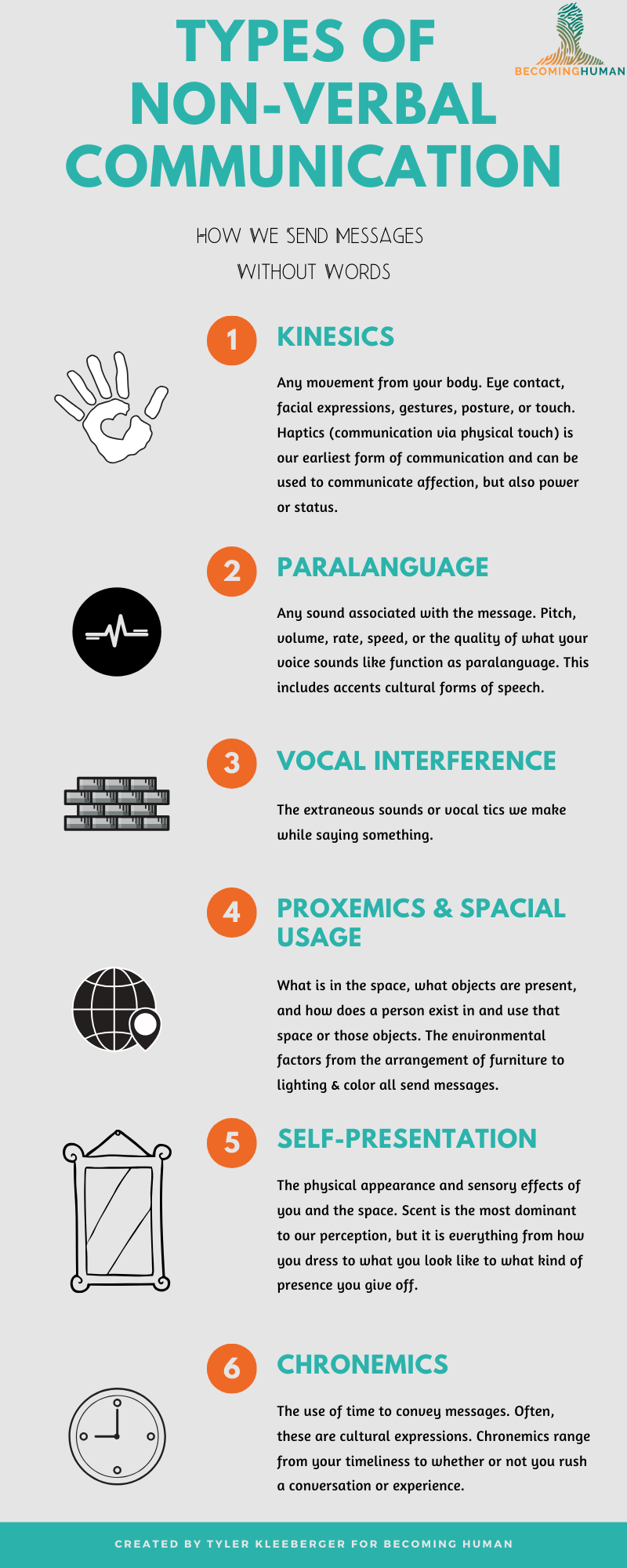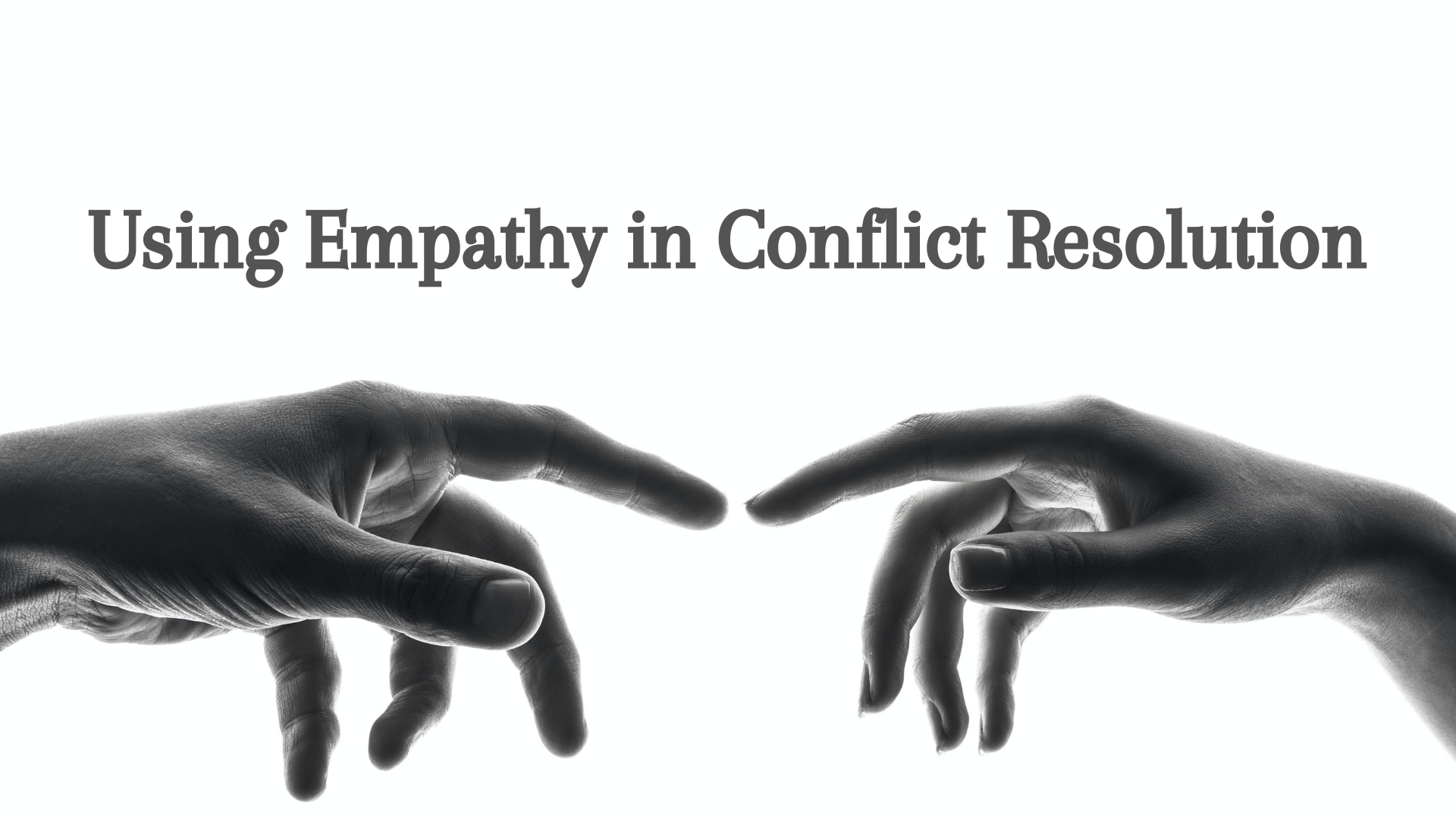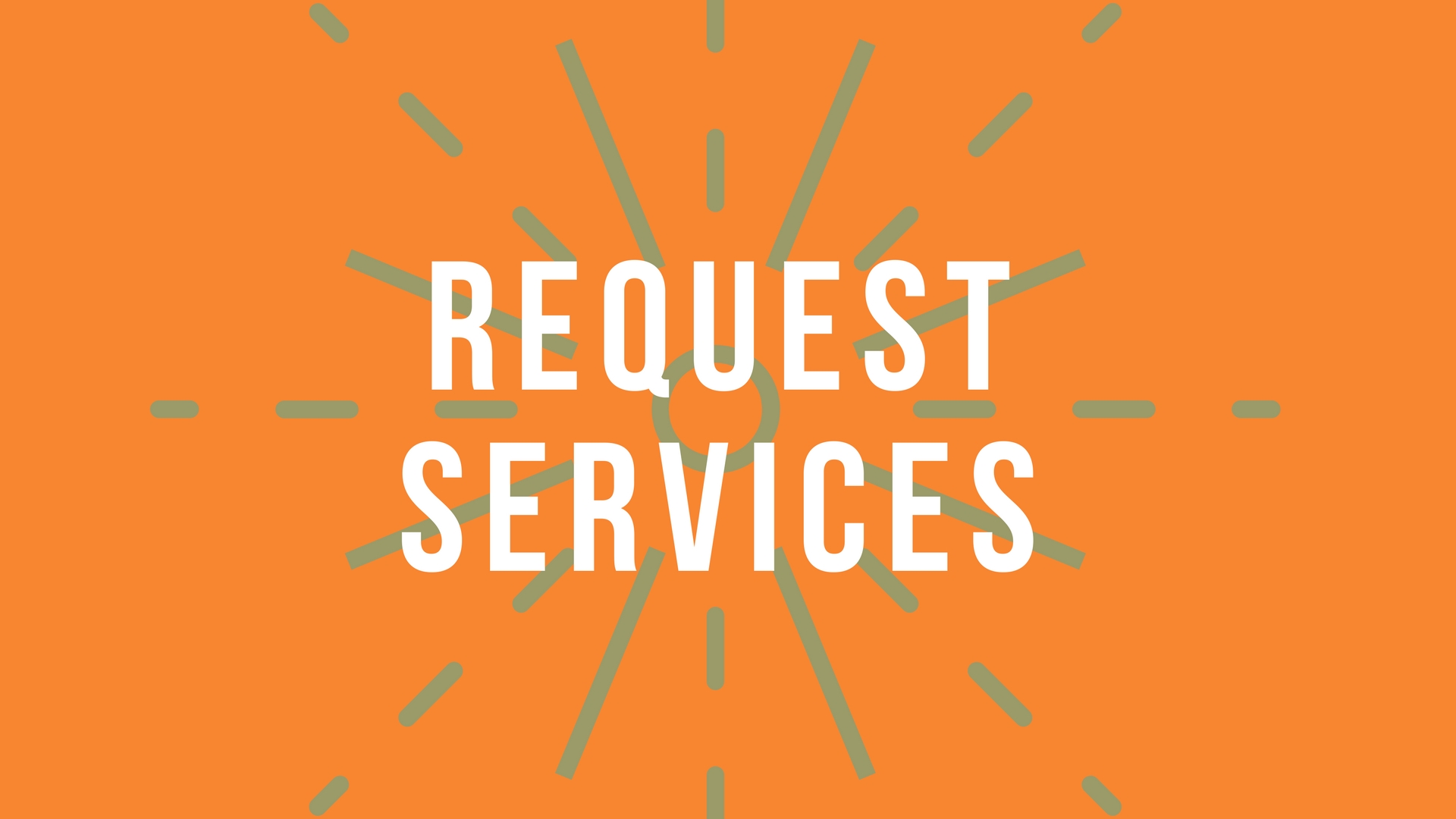A Primer in Non-Verbal Communication
/Which is both powerful & necessary — because you are constantly communicating.
Part One — Enter At Your Own Risk
The shirt you’re wearing (or not wearing). The gazed look of apathy while in conversation. How you place your hand on their shoulder. That weird childhood toy you keep in your closet. When you stand a wee bit too close. The increased rhythm of speech when telling that exciting story. The rolling of the eyes.
None of these are words.
But they are all sending messages.
Welcome to the world of non-verbal communication.
Enter if you dare — because this gets messy, complicated, confusing, and overwhelming.
But it is oh so important.
Because when it comes to communication, you are constantly communicating.
Everything you do says something.
Diagram 4.31
Part Two — Chaos & Communication
Let’s get some of the messiness out of the way. Please direct your attention to diagram 4.31 and bask in the incompetent depiction of what is happening in any communication situation.
You’ll notice a lot of dotted lines. This is, partly, because I’m terrible at drawing. But I think the point is made — there’s a lot going on.
First, let’s deal with what communication is. Perhaps a technical definition will suffice:
The process of a continuous series of behaviors
leading to a purpose
through which people create and manage relationships
exercising mutual responsibility
in creating shared meaning.
Who comes up with this stuff?
Essentially:
There is a constant act of giving and receiving messages.
With a goal.
That shapes the people involved while being dependent on the uniqueness of each person involved.
Which creates the shared meaning that results from the interaction.
What can be deduced from this terrible drawing and this complex definition?
Communication is more than the words we speak.
You have a sender and a receiver. The sender sends a message using various symbols that have meaning and the receiver receives it. Once received, the receiver gives feedback using the same kind of message.
Simple enough.
Except that, interchangeably and constantly, the sender and receiver switch roles. While the sender is sending a message, the receiver is also sending a message as a sender that the original sender is receiving and they are both giving feedback to those messages at the exact same time.
But wait, there’s more!
Embedded in this process is that there are a bunch of other messages impacting the communication process.
The context — which could be the physical setting, the social situation based on the nature of the individuals and their relationship, the historical setting that each brings into the process, the psychological situation of each participant, and the cultural situation that must be navigated based on who is involved, where they are from, and what values, meaning, expectations, norms, and beliefs come from their cultural understanding of the world.
Or what communication scholars call “noise” — anything that distracts from the communication. Whether external effects like sounds or visible effects of the room or the internal noise of how each participant is feeling or thinking.
You also have the channel — the component that the sender and receiver might not be in a room and they might not even be in the same space — the media or channel used to communicate a message can be almost anything or anywhere and, as you might expect, impacts the communication process.
Which is why one of the central principles of communication is:
Communication is constant & continuous.
You are constantly communicating — you are constantly sending and receiving messages…even when you aren’t talking.
It would be convenient if communication was constricted to two people sitting in a vacuum of a space where they say one completely understood word at a time with no visuals, noise, context, or complexity.
It would also be less valuable.
If we want to take communication seriously, we’re gonna have to be honest about non-verbals.
Part Three — The Non-Verbal Framework
You walk into the room and the lighting is just right. You feel a sense of ease and comfort.
You show up to the family gathering and there’s your cousin — wearing that political shirt that they knew would piss you off.
You sit down at the table and the person who hurt you looks directly into your eyes. A tear begins to seep down their cheek and it gives you a sense of hope; that reconciliation might be possible.
You’re standing outside at the party and, all of a sudden, you hear a crash. Everyone stops. All goes silent, anticipating the chaos to come.
Yes, even silence sends messages.
We know what non-verbal communication is — we swim in its waters every day of our existence.
However, we might not recognize how prevalent our non-verbals are in the fabric of every moment.
When you wear your emotions on your sleeve — that’s kinesics.
How your accent reveals your demographic — that’s paralanguage.
When you clear your throat — that’s vocal interference.
When you break the social norm of standing twelve inches away — that’s proxemics.
When you walk in a room and the lights are too bright or you get a certain vibe from various artifacts decorating the space — that’s spacial usage.
When you wear that specific shirt — that’s self-presentation.
When you’re late…again — that’s chronemics. Or the timing of when you deliver a message—that, too, is non-verbal communication sending its own message alongside of the words you speak.
All forms of communication.
All involve the sending of messages.
And all play a role in what we are saying.
In our cultural climate, we emphasize the importance of our words. We craft messages, we chide the destructive use of language, and we attempt to filter our rhetoric, thinking before we speak.
This is good.
But ought we put the same emphasis on the tremendous amounts of other messages we are sending in any given moment?
Communication scholars would say so. Here’s some common claims made concerning non-verbal communication:
Non-verbal communication is primary to verbal communication.
A non-verbal takes precedence over something that is spoken as it is perceived to be more believable and genuine than words. An example would be someone saying “I love you” while gritting through their teeth.
Non-verbal communication can be intentional, but it can also be unintentional.
And often is the latter. We don’t always realize what we are communicating or even that we are communicating.
Non-verbal communication is ambiguous.
One act or image can have an infinite number of meanings and it is based on the audience and how they interpret it. There is no 1:1 ration of what something means and the ensuing meaning can be different for every different context of the message or for every different receiver of the message and how they interpret it.
Non-verbal communication is multi-channeled.
What does this mean? That non-verbal communication is everything except the words themselves. Hence, there’s a lot of communicating going on beyond just what you say.
I believe it’s time we paid attention to our non-verbals.
Part Four — Warning: Everything You Do Says Something
You and everything involving you is not only part of the messages we send, but they are also messages themselves. Messages that are often primary, difficult to interpret, and constant.
We need to be aware of the nature of non-verbals.
We need to give them the emphasis that correlates to their impact.
And we need to respect their ability to greatly influence what we are saying and how it will affect our interactions.
How you speak, when you speak, the timing of your message, the faces you make, how you stand, how you sit, whether you are standing or sitting, how you look, what shirt (if any) you are wearing — these are all ways you are communicating something.
But it goes further — how you keep your house, what decorations you put in different places, the objects you call your own, how you drive, or even your profile picture you use for social media — these are all communicating something.
Everything.
Absolutely everything.
Is communicating something.
Yes, this makes communication messy, complicated, confusing, and overwhelming, but the more you understand your communicative tools, the more effective you will be in wielding them. The world that results becomes easier to manifest, more aligned with your objectives.
Remember, we are often communicating through non-verbals unintentionally — these things are so assumed and natural that they often exist at a subconscious level.
Can you treat them as intentionally as you do your words?
We also have the problem that there is no singular meaning for a particular communicative act and, even with the same person, it can mean something different depending on the situational context and how they interpret it.
Despite these issues, though, it is also going to be the primary mode of communication in every relationship.
Can you handle your non-verbals with the care they deserve and, possibly, avoid the misinterpretations that will arise if you don’t?
If you can be more aware of this phenomenon, it will allow you to be more intentional about everything you do. When you notice that each behavior, appearance, or move is sending a message, you can enter into that message much more intentionally.
But secondly, it will force you to ask, when you do notice, what that message is. Sometimes this will be minor and have no real effects on the situation, but sometimes it can make or break a relationship, an organization, or a culture.
We need to be able to see that everything we do, say, or enact — every single part of our lives — is saying something.
Let’s handle our non-verbals with care.
And use them to communicate accordingly.
For more on communication, rhetoric, and language — check out this article (which also explains why words, themselves, are meaningless):












![Three Reasons We're Lonely - [And Three Responses For Being Less So]](https://images.squarespace-cdn.com/content/v1/5963d280893fc02db1b9a659/1651234022075-7WEKZ2LGDVCR7IM74KE2/Loneliness+3+update+%283%29.png)





























